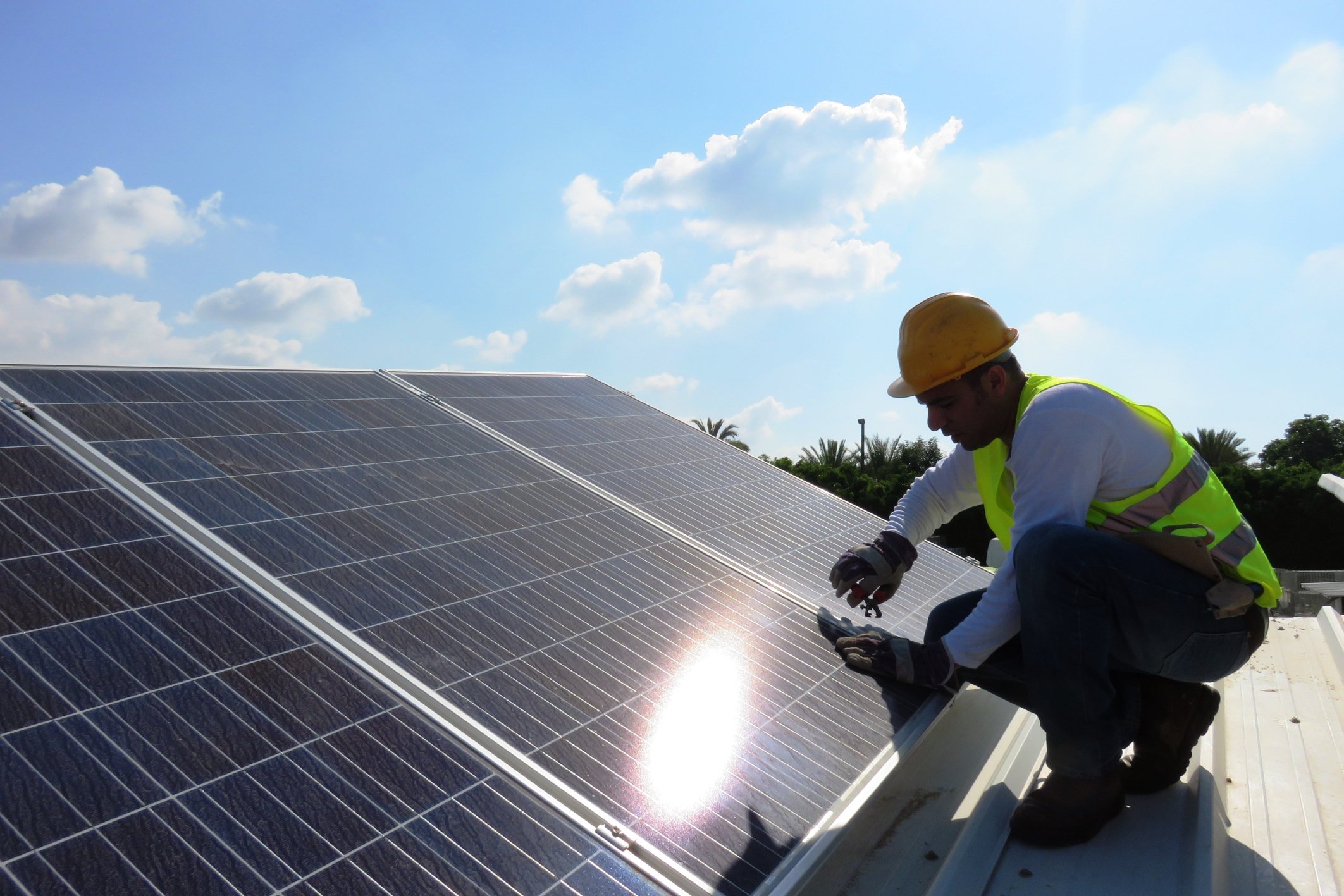So you want to invest in a solar company, eh? It's not as easy as finding a company that has the word "solar" in the name because solar companies are especially tricky to analyze. Not only do you have to deal with the usual business metrics – cash flow, EPS, etc. – you're also up against a lot of technical data and a rapidly evolving marketplace and regulatory environment.
But there's one especially big pitfall that can trip up a solar investor, one that I made myself when I first started analyzing solar companies: evaluating a company based on its panel efficiency. Let's take a look at why panel efficiency might not be the best metric and what you should look for instead.
What is panel efficiency?
Every solar cell – and, therefore, every solar module (or array of solar cells, sometimes referred to as a "panel") – can be measured by its efficiency, or how much power it can capture from the sunlight that hits it. Without getting too technical, a 20% efficiency rating means the panel can capture and convert 20% of the energy contained in each photon that hits it. That may not sound like much, but when you consider that theoretical peak efficiency for basic crystalline silicon solar cells is only about 25% , it seems a lot better.
However, rapid advances are being made in solar cell technology. In the last few years, different types of solar cells have been developed that have different efficiency ratings. The most efficient solar cells currently available are "concentrator quadruple-junction monolithic cells" made by the Soitec and Fraunhofer Institute, with an efficiency of 46%.
These three pulic solar companies run the gamut in terms of their peak panel efficiency; SunPower (NASDAQ: SPWR) boasts the best in the industry, JinkoSolar (NYSE: JKS) is near the bottom, and SolarCity's (NASDAQ: SCTY) Silevo is in the middle :
|
Company |
Cell Type |
Peak Module Efficiency |
|---|---|---|
|
SunPower |
Monocrystalline Black Silicon |
21.5% |
|
Silevo |
Thin-film Hybrid |
18.4% |
|
JinkoSolar |
Multicrystalline Silicon |
16-16.5% |
Source: Company websites
Advances in panel efficiency often make news headlines, because companies are eager to tout their technological achievements, and better panel efficiencies make the entire sector more viable. But that doesn't mean it's particularly useful for investors.
So why isn't this a good metric to use?
Primarily because it doesn't factor in costs. If money were no object, everyone would use those "concentrator quadruple-junction monolithic cells" I mentioned earlier. But they are insanely expensive, and are only used by the likes of NASA and other space agencies, which need to make the most of every square inch of panel space on spacecraft and satellites.
While commercial solar farms have an incentive to maximize the amount of power they create from every square foot of space they own, too, cost is definitely a factor. And for a homeowner considering a residential rooftop system, cost is a huge concern. Most residential systems use the less-efficient and less-costly "commodity" multicrystalline silicon modules.
Panel efficiency also ignores certain advantages of less-efficient technologies. For example, CIGS technology uses a mixture of copper, indium, gallium, and selenide instead of traditional silicon to make solar cells and modules. While the peak efficiency of these modules is currently comparable to peak multicrystalline modules, CIGS cells are more resistant to heat and corrosion, making them more suitable for desert environments.
What metric should we use instead?
A more useful metric for investors is cost-per-watt, which factors in both efficiency and cost. Naturally, commodity multicrystalline panels have lower cost-per-watt than more complex technologies. But even this metric has its drawbacks.
First, cost-per-watt can be a tricky number to uncover. While pretty much every module manufacturer reports module efficiency, not everyone reports cost-per-watt of those modules. SunPower doesn't, for example. Some analysts estimate cost-per-watt of $1.00 for SunPower's modules, and this seems reasonable to me. It may not be 100% accurate, but it at least gives investors a rough idea of the company's expenses.
But be careful when looking up cost-per-watt, because it can be reported in different ways. For example, JinkoSolar and SolarCity both announced cost-per-watt efficiencies for 2014. But JinkoSolar's is $0.48 and SolarCity's is $2.95! Was JinkoSolar really more than six times as cost-efficient as SolarCity? Of course not! JinkoSolar is listing their cost to produce a module, while SolarCity is reporting the total cost of installing a module (including sales costs and general and administrative expenses). SolarCity's panel manufacturer, Silevo, only reports that its cost-per-watt is "well below a dollar."
Getting the whole picture
While cost-per-watt will give you a rough estimate of how efficient a company's manufacturing process is, and can help to decipher whether a company has a leg up on its peers that manufacture similar modules, it can't function in a vacuum any more than panel efficiency can. The Foolish investor needs to look beyond a single metric and take a holistic look at the company.
For example, even though SunPower's cost-per-watt is higher than JinkoSolar's or SolarCity's, it has a better looking balance sheet with a lower debt-to-capital ratio than the other two (61.2% compared to 72.6% for SolarCity and 73.6% for JinkoSolar). JinkoSolar,however, boasts the highest TTM profit margin of the bunch at 6.7%, narrowly beating out SunPower's 6.2% and crushing SolarCity's -20.7%.
Investor takeaway
It's tempting to try to find a single simple metric or statistic that can serve as a shortcut for finding the best solar company. Unfortunately, trying to find one is like trying to find a 100% efficient solar panel: it simply doesn't exist. However, looking at cost-per-watt will at least give an investor a starting point to evaluate a company's products, more so than panel efficiency.






